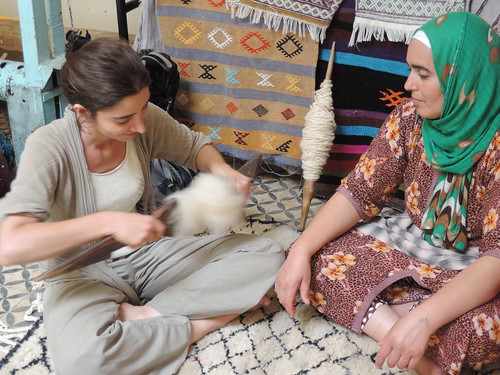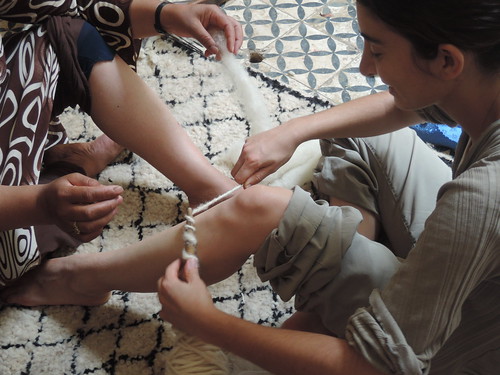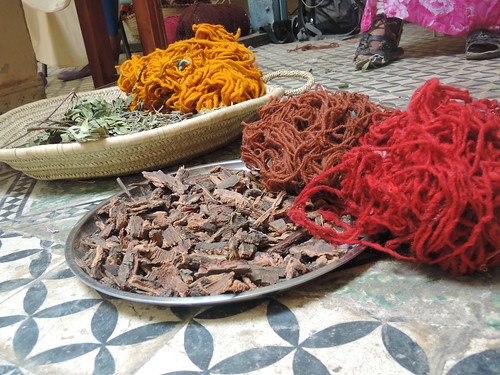It is incredible the patrimony that I will be able to bring back home after this intense 10 weeks here in Ain Leuh with the Advocacy Project. Going through all the stages of the weaving process feels like being initiated to an ancient and pristine ritual in which all the passages are filled with a rich symbolic content.
This week we have gone through the phase of carding, preparing the yarn and coloring wool.
Assisted by Hafidha, one of the latest to join the women at Association Tifsa – and yet very talented – I have been taught how to properly remove impurities from wool with the help of the traditional Kirshaal, which in Amazigh language designates the two long brushes in the picture below, and to brush wool with a moshta.
Moments of hilarity followed, when I was asked to uncover my leg to use it as the spinning wheel on which wool would then be rolled in order to produce the yarn through the help of a mighzaal.
Dyeing the yarn offered a fascinating overview of all the possible colors and nuances that are available in nature and contradicted some of my convictions: so an unexpected greenish yellow – not pink – would result from dyeing with pomegranate. Onion skins for orange-peach pigment, madder for deep red…
Like witches preparing a potion, we proceeded to immerse the yarn into wanwoori, a tree that is typical of Ain Leuh region and whose leaves are used to obtain a mustard-yellow hue, and that is likewise known as a traditional remedy to treat some blood-related conditions.
In Amazigh weavers’ tradition, colors – like motifs – reflect the life cycle: the traditional palette would comprise 5 basic colors like green, yellow, red, black and orange that can assimilated to the hues of henna before and after it is applied on the skin by brides-to-be the first day of the wedding ceremony.
Coloring with natural dyes might be a long process, yet one that would ensure the final product to be colorfast, thus increasing the value of the woven product.
I have to admit, this was one of the most intriguing days of my weaving boot-camp and women at Tifsa really know their stuff. Like Hachmia, my host, told me, I am one inch away to become fully Amazigh.
Posted By Silvia Irace
Posted Aug 24th, 2014





